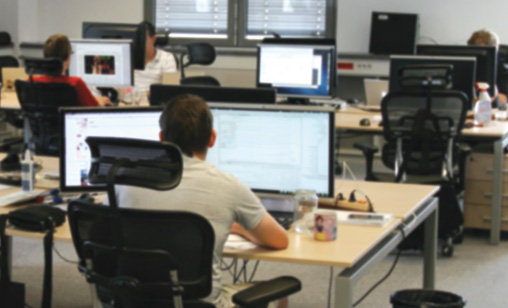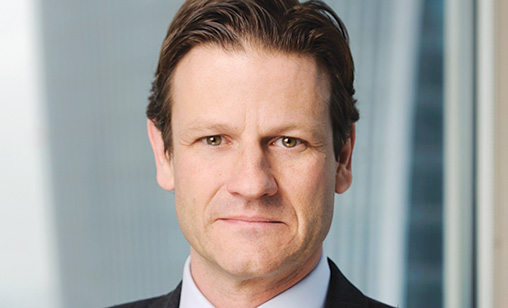Main Story
Technology’s threats
A recent industry survey revealed rapid technological change and the threat of cyberattacks have moved to the top of the risk agenda in aviation’s C-Suites.
April 1st 2016
An inability to keep up with technological change is the number one risk for airlines, the preliminary findings of a survey of senior aviation executives by global advisory, broking and solutions company, Willis Towers Watson (WTW) has revealed. Read More »
Social unrest, involuntary migration and terrorist threats also ranked highly on the risk gauge at airlines, particularly in the Asia-Pacific, the survey reported.
 |
Released in March, the survey polled 147 industry leaders of which a quarter of respondents were from the Asia-Pacific. Most of those surveyed managed companies with revenues of more than US$1.5 billion.
The results underscored earlier evidence that information technology and cyber security are two of the major challenges of the region’s fast-growing aviation industry and therefore its insurers.
Last year, the International Air Transport Association (IATA) warned that as one of the most complicated and integrated systems of information and communications technology in the world, the global aviation system is an attractive target for a large scale cyberattack or for a targeted assault on its most critical systems.
“While we cannot eliminate cyber risk, we must manage it. This can be done, but it would require a deeper collaboration between authorities, industries and the academic world through an information sharing program that leverages the collective power of the aviation industry,” IATA’s director general and CEO, Tony Tyler said.
That message was echoed by WTW’s global head of transportation industry, Mark Hue Williams, who addressed the company’s aviation conference in Singapore last month. The aviation industry is at an inflection point, he said.
“Regulation and technological advancements are demanding new operating models. Simultaneously, the industry faced the growing problem of both physical and digital attacks from hostile parties that are targeting the sector’s strategic position in the movement of people, products and ideas,” Hue Williams said.
“This is set against an unstable macro geopolitical and economic backdrop and an ultra-competitive global labour market.”
| ‘Cyber insurance was worth US$2.5 billion last year with the sector’s market across all industries forecast to be worth $25 billion by 2025’ |
He said it was a community problem that demanded and deserved a community-led response from government, expert third parties, insurance companies and regulators. Last year was probably the safest year for aviation on record but the industry has to protect this result to the best of its collective ability.”
WTW has compiled a series of industry specific risk indices. The aviation survey sector drew its information from airlines, airports, aircraft lessors, aerospace manufacturers and general aviation leaders.
Hue Williams said fifty three per cent of respondents expected the impact of digital vulnerability and rapid technological advancements to increase significantly in the next 12 months.
“Private asset-owners, governments and the public at large are growing wary of the potential for cyberattacks that disable critical infrastructure, imperil national security and threaten the global economy,” the survey found.
| ‘New and evolving risks, combined with older risks such as weather, have produced a very complicated landscape. The importance of risk and its management at board level is very different today than it was in the recent past’ Willis Towers Watson |
“In the private sector, they also threaten hard won corporate reputations and consumer confidence. Intangible digital assets are at risk from economic espionage while privacy breaches cost money and loss of business. On top of the commercial and reputational consequences, cyberattacks threaten to topple a company’s leadership. No wonder then that we see more evidence that cyber security is at the top of boardroom agendas and not just in our own research.”
Hue Williams said six priorities should be on every company’s integrated “cyber risk check-list”. They are: ensure that enterprise-wide governance is in place, assume hackers are already inside, invest in making the entire workforce cyber-smart, consider technology as one of several lines of defence, insure against cyber threats that can’t be mitigated and allocate enough capital to the right cyber defences to protect your crown jewels.
“We are in the middle of a technological revolution that is changing the way we live and do business. It’s a very young revolution, with amazing opportunities and substantial risks,” said the survey’s authors.
“Some argue the solution lies in technology. Some that it lies in institutions. Some that it lies in human behaviour. Some that it lies in insurance. We think it’s all of these things in concert.”
 |
To WTW, the survey responses indicate the gap between industry needs and the responses of the insurers. “This is a generalization, but there is a rush to insurance from the C-Suite because new risks are front and centre of their minds. But insurers’ responses have been generic.”
For example, Hue Williams said, there needs to be a more tailored response from risk insurers to the non-physical business interruption experience that costs a lot of money, in many different areas, to defend against a cyber breach.
He said rogue digital actors have clearly cast a shadow over both global politics and commerce. “They have instilled fear in the markets by threatening logistics and transport systems to cyberattacks and/or data breaches,” he said.
Added to that fear is the impact of the social media revolution where everyone has a voice and the challenge of defending your brand intensifies. “In the digital world, technological progress moves fast, keeping the risks of digital vulnerability and rapid technological advancement on any board’s radar,” WTW said.
Another area of risk is the complex supply and logistics chain which has emerged. “Using local and overseas suppliers may reduce costs and time to market, but it increases exposure to risks such as weather, inadequate infrastructure, industrial action and currency shifts, to name only a few,” said Hue Williams.
Talent management and the complexities of a global workforce are yet another trend. “As middle classes emerge around the globe, so does the promise of social mobility. Where workers once stayed loyal to one employer for most of their working lives, globalization has given them access to more and better opportunities. A dearth of highly skilled labourers is further complicating successful workforce recruitment,” the survey predicted.
Williams said the growth demand in the Asia-Pacific over the near and medium term requires airlines and other aviation players “to do some simple stuff” to attract, retain and hire talented people and reward them well to make sure an employer is responding to generational change as well reflecting the changing needs and requirements of a more mobile workforce.
“There is a common thread and that is digital vulnerability and how to change that to technological advancement, but the grouping is so narrow. It is in that difficult to manage and severe in potential outcome sector that leaders must navigate,” WTW said.
| Five mega-trends with a disruptive impact on the global aviation industry: * Geopolitical instability and regulatory uncertainty * complex operating models in an interconnected world * digital vulnerability and rapid technological advancement * talent management and the complexities of a global workforce * changing market dynamics and business model insecurity |
Yogender Tiwari says:
April 2nd 2016 10:32pm